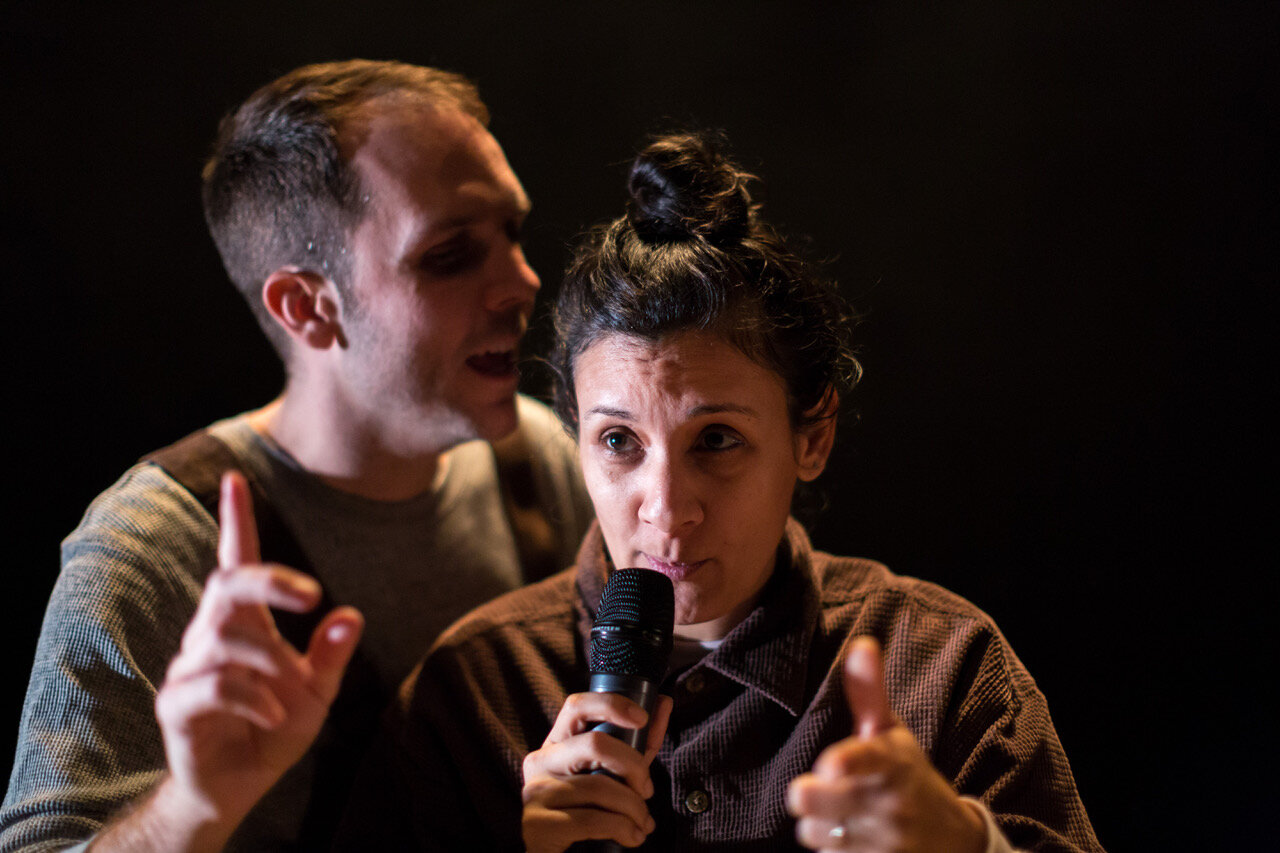
Call It a Day
In January 2009, my then-partner and I found ourselves sitting at the kitchen table of an Amish couple, Samuel and Martha Herschberger, in rural Illinois. We sat politely, in curiosity and conversation, across gaps in language, belief and daily life. It was one of those moments where nothing especially remarkable happens, but the experience lingers with a sense of quiet misalignment, of two worlds brushing up against each other but not quite making contact.
In Call It a Day revisits, refracts and repeats that conversation—looped like a live art Amish Groundhog Day. I made the piece gradually over five years, between Los Angeles and London, in collaboration with a number of artists and performers. That slow process of return and revision felt fitting for a piece concerning the limits of understanding and the repeated attempts to connect across difference.
-
Four performers, including me, sit around a large wooden table. The table becomes a place of exchange, miscommunication, repetition—at times a stage, at times a game table. A loose structure built around a deck of prompt cards invites the performers to cycle through versions of a remembered encounter: fragments return, scenes shift slightly, actions repeat or unravel.
Lyrics from Time After Time drift in and out, as do out-of-context scenes from the Harrison Ford film Witness. Rather than playing characters, we inhabit roles loosely and interchangeably, trading places and perspectives by shifting chairs. Through an almost musical progression of repetitions, one afternoon becomes a strange, kaleidoscopic examination of empathy, assumption, and the possibility or impossibility of ever really understanding one another.
“Call It A Day veers between an abundance of and a lack of hope. As an introduction, Wohead speaks in Pennsylvania Dutch, the language Samuel and Martha speak and one that isn’t available on Google Translate. English subtitles are projected behind. It’s an effort to reach across the divide, but fed into Wohead’s ear, he’s just repeating sounds he can’t translate, his words devoid of meaning. Two of Samuel and Martha’s children come downstairs and the rituals of language and belief are passed on again.
In Wohead’s work, making theatre is an attempt to bring people and ideas to life, and acting is an effort to understand them. In a generous, calm performance, Call It A Day demonstrates how hard true understanding – of both oneself and of another – is to achieve.”






Concept and performance Greg Wohead
Originally realised & performed with Tim Bromage, Mireya Lucio, Amelia Stubberfield
Composing and sound design Maxwell Sterling and Ben Babbitt
Lighting Design Dan Saggars
Lighting Associate Ryan Joseph Stafford
Scene Design Consultant Shannon Scrofano
Production Manager Helen Mugridge
Dramaturgy Season Butler
Producer Laura Sweeney
Photography Paul Blakemore
With thanks to those who have been involved in the development of Call It a Day: Eirini Kartsaki, Ryan Masson, Lisa Dring, Ernie Silva, Mo Faraji, Vera Chok, Hector Dyer, Jesse Saler, Jessica Hanna, Jorge Andrade, José Capela, Vânia Rodrigues
Call It a Day is co-commissioned by Theatre in the Mill, South Street, University of Reading, Chapter and The Yard with additional support from Shoreditch Town Hall. The development was supported by a residency programme with Los Angeles Performance Practice at CAP UCLA and mala voadora’s Dois por Dois residency program supported by Inresidenceporto. Supported using public funding by the National Lottery through Arts Council England with additional funding by the Peggy Ramsay Foundation.